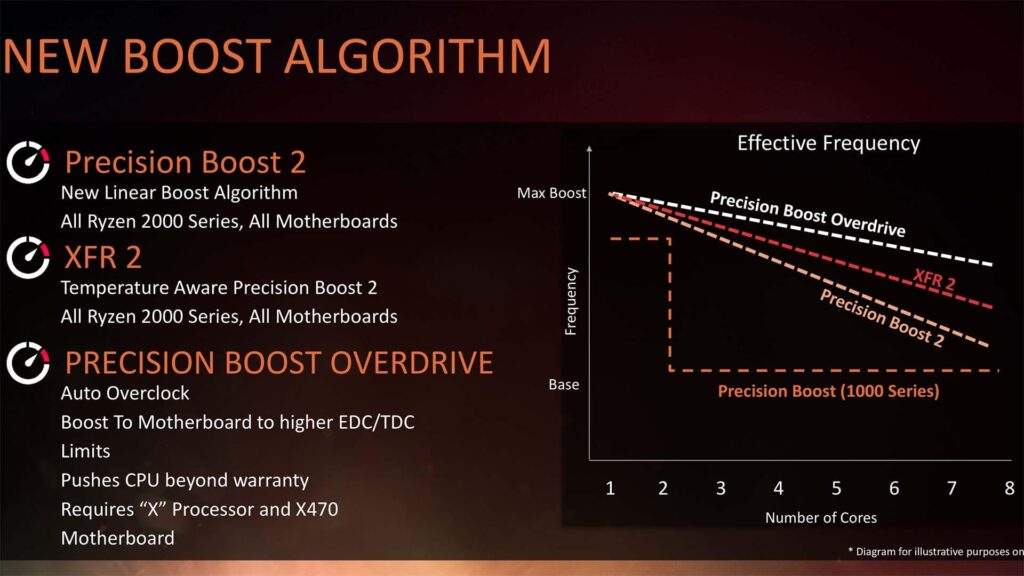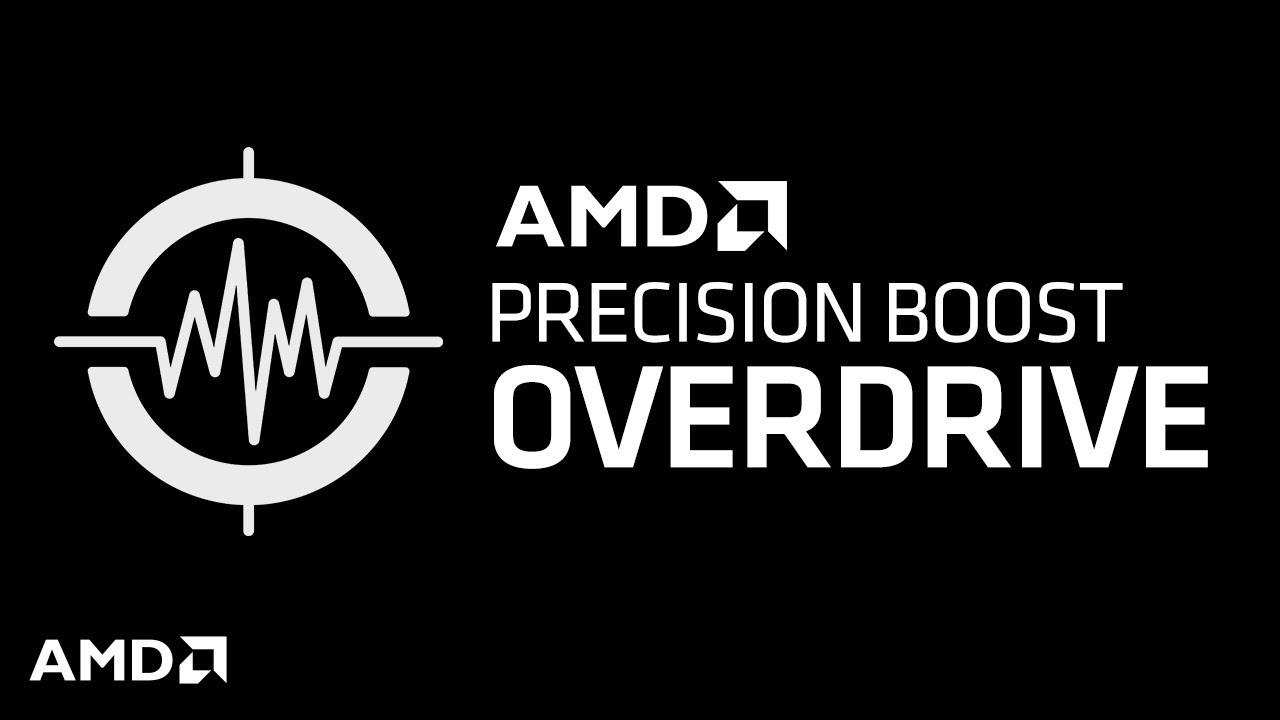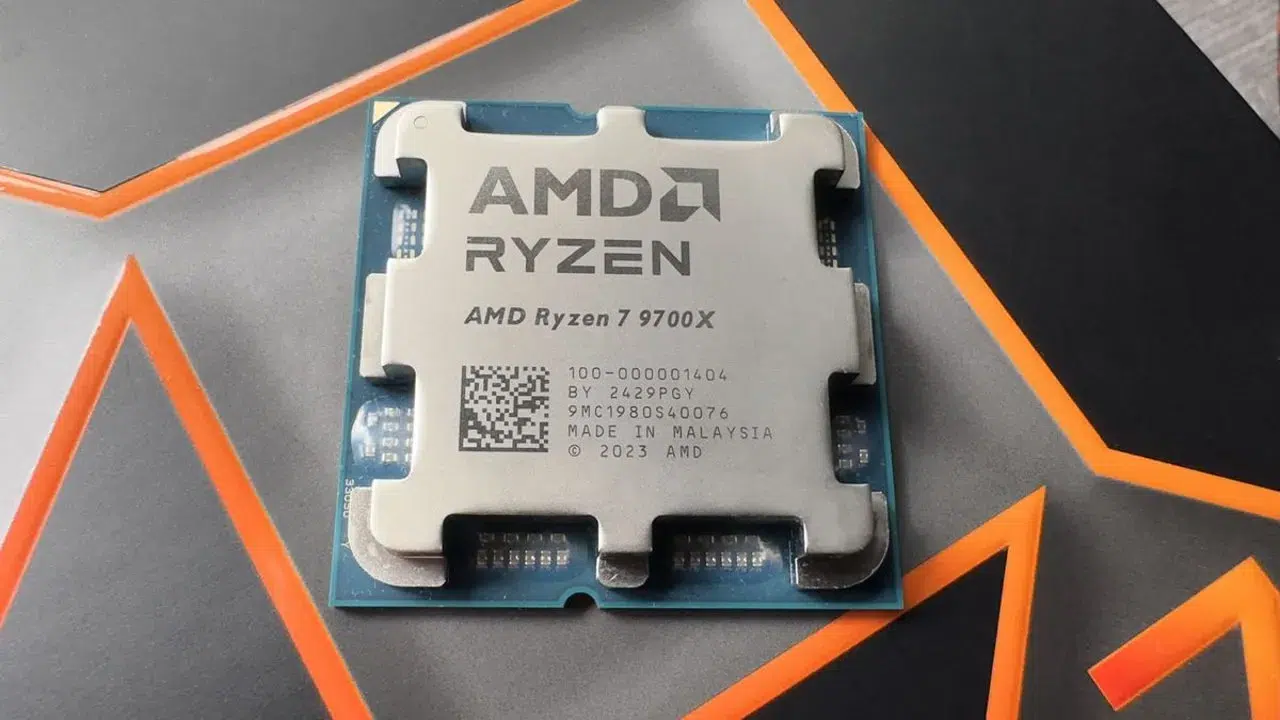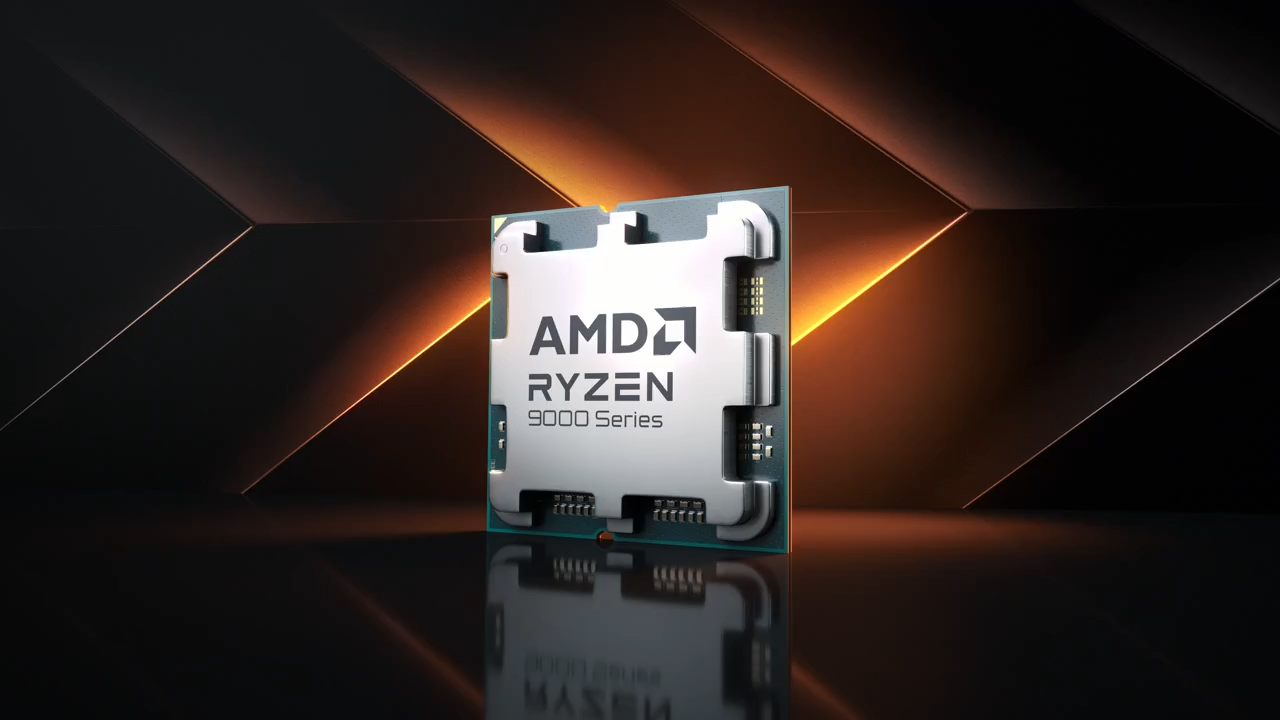- Precision Boost Overdrive extends electrical and thermal limits to sustain boost without directly impacting the clocks.
- PPT, TDC, and EDC determine the margin; cooling and VRM determine the actual profit.
- PBO 2 with Curve Optimizer enables per-core undervolting for increased efficiency and stability.
- X3D compatibility: Full support at 7000 with limits; variable support at 5000 depending on BIOS and motherboard.

If you are wondering what is the Precision Boost Overdrive mode on Ryzen And if it's worth activating, you'll find a clear and straightforward explanation here. The idea of PBO is Give your CPU more electrical and thermal headroom to sustain high frequencies for longer, squeezing out a little more performance without having to go through a traditional manual overclock.
It's important to clarify from the outset that PBO is not the same as manually increasing multipliers. Does not directly adjust base or boost frequency core by coreInstead, it tweaks power, current, and temperature limits to allow AMD's boost algorithm to work its magic more smoothly. With good cooling, decent VRMs, and some care, that extra headroom translates into small, real-world gains.
What is Precision Boost Overdrive (PBO)
PBO, or Precision Boost Overdrive Mode on Ryzen, is a AMD technology which works hand in hand with Precision Boost and Precision Boost 2. Expands the limits that control how and how much your Ryzen can boost, always depending on the temperature, workload, and power capacity of the motherboard. It's an additional option enabled in the BIOS or UEFI.
Although it sounds like overclocking, the difference is important: PBO does not directly affect the clock speed by setting a new fixed limit.What it does is allow for more voltage and more current within certain limits, so that the built-in boost algorithm itself can raise and sustain higher frequencies as long as the sensors allow.
By design, Precision Boost comes enabled by default on modern Ryzen to achieve advertised turbo frequencies. PBO goes a step further by relaxing more conservative electrical and thermal limits., always under the supervision of internal sensors and those of the motherboard.

How Precision Boost Overdrive Works on Ryzen: Sensors, Limits, and Boost Headroom
To decide whether it can stretch the boost further, the CPU firmware monitors a number of variables in real time. Processor temperature, instantaneous load, number of active threads, VRM status and temperature, voltages and currents; everything enters into the equation.
The PBO key is three limits configurable by the board or by the user: PPT, TDC and EDC. PPT is the total power allowed in watts (usually around 40% above the TDP)TDC is the sustainable current in amperes that the system can deliver continuously depending on temperature; EDC is the instantaneous peak current that can be supplied during short bursts.
As long as PPT, TDC and EDC are below their limits and the temperature is healthy, PBO allows Precision Boost to push harderAs soon as one of them reaches its limit, the algorithm cuts back to protect the entire system. That's why the cooling and quality of the VRM are so crucial.
For light loads like browsing or watching videos, the CPU can boost clock speeds higher on a few cores to maintain smoothness and low power consumption. In games, the benefit often translates into a few extra FPS if there is no GPU bottleneck.; not a huge leap, but a useful fine-tuning.
Various manufacturers and tests have observed modest improvements thanks to Precision Boost Overdrive mode in Ryzen. There are scenarios where it contributes from 1% to 3% and others where it is barely noticeable., and also specific cases where it's best to disable it if the thermal profile of the case and VRM aren't suitable. With good airflow and well-tuned limits, PBO can add up to around 200 MHz per core at favorable peaks.
PBO vs. Auto Overclocking and Ryzen Master
A recurring question: Is Precision Boost Overdrive mode on Ryzen the same as Auto OC? The short answer is no. PBO plays with limits of power, intensity and temperature so that the automatic boost does its job with more margin. Auto OC, either from BIOS or with Ryzen Masters, attempts to push frequencies and voltages in a more direct and generic way.
That's why many users prefer Enable PBO and disable Auto OC to balance performance, power consumption, and temperatures.. Still, there are motherboards and CPUs where combining PBO with Auto OC gives a small extra; it depends a lot on the silicon, VRM, and heatsink.
On chips where Auto OC contributes little or is not available, Combining PBO with undervolt using Curve Optimizer usually gives the best resultsThis has been reflected in independent tests, with lower temperatures, reduced fuel consumption, and slightly better sustained frequencies.
PBO 2 and Curve Optimizer: fine-tuning per core
Starting with Ryzen 5000, AMD introduced PBO 2 and with it Curve Optimizer. Curve Optimizer allows applying a negative voltage compensation per core (or global), adjusting the Vf curve so that the chip needs less voltage at the same frequency.
With a good undervolt per curve, The CPU heats up less and can stay in boost longer., which typically translates a slight energy saving into more sustained performance. The process is manual and requires testing: each CPU is a unique product due to the silicon lottery.
The typical methodology is to apply a modest negative offset, test for stability and performance, and repeat. Finding the sweet spot requires reboots, stress, and benchmarks. until finding the balance between stability and thermal gain.
Ryzen X3D Support: What Works and What Doesn't
Ryzen CPUs with 3D V-Cache impose overclocking restrictions to protect the memory stack. In the series Ryzen X3D, PBO works with certain limitations imposed by AMD, allowing adjustments within safe margins.
In the Ryzen 5000 X3D generation, support was more convoluted. The 5800X3D did not support it at launch., but over time some manufacturers have released BIOSes that enable PBO and/or Curve Optimizer functions with restrictions. Some X570 and B550 motherboards, and even X470 and B450 motherboards, allow this to varying degrees.
Exact compatibility depends on the board and microcode. Check your BIOS changelog and motherboard manual to confirm which options are available. in your specific model. Even when enabled, the limits are typically conservative.
Quick guide to enable and adjust PBO and PBO 2 in BIOS
Enabling Precision Boost Overdrive mode on Ryzen is done through your motherboard's BIOS/UEFI. The exact path varies, but is generally similar: Enter advanced mode, search for AMD Overclocking and locate the Precision Boost Overdrive section.. Accept the warning and proceed to configuration.
In the PBO menu, choose advanced mode and decide the limits. You can leave the PBO limits on automatic or let the motherboard control them.This last option usually allows for more heat and power, which improves performance if your heatsink and case are up to par.
Next, enter Curve Optimizer if your platform supports it. For a simple first fit, select all cores, negative sign and a conservative magnitudeStart with modest values and increase in small steps to avoid instability.
A practical guideline is to start at -15, stress test and benchmark, and advance to -20, -25 and -30 if everything is stable. The practical limit of global offset is usually around -30 on many boards.From there, returns decrease and stability suffers.
To validate, use a multi-threaded benchmark and thermal monitoring. Tools like Cinebench for measuring and a sensor viewer for checking temperatures and clocks serve you. During data collection, close other apps to avoid skewing the results.
Once you have a comfortable overall fit, the next level is per-core. Tuning core by core maximizes the potential of each chiplet, but it requires more time and patience. If you don't feel like going that far, stick with the stable all-core profile.
When is it worth activating PBO and when is it not?
Enable Precision Boost Overdrive mode on Ryzen if your case has good ventilation, the heatsink is competent, and the motherboard's VRM is not very low-end. In these scenarios, PBO adds performance for free and there is no significant penalty.. With PBO 2 and a sensible negative curve, even better.
If your computer is operating at its thermal limit or the VRM is running too hot, You may not see any benefits or even lose sustained performance from throttling.In these cases, improve cooling before pushing the limits higher.
For rigs with powerful GPUs where the game is clearly GPU-bound, FPS gains will be modest. Still, in productivity or multicore tasks, PBO helps you score points and maintain peak frequencies for longer.
Cooling and VRM: PBO's silent allies
Precision Boost Overdrive mode on Ryzen lives and dies by temperature. Changing the thermal paste, cleaning the heatsink, optimizing airflow, or adding a fan can give the CPU that extra degree or two that makes the difference between sustaining the boost or not.
The VRM has a lot of power: If its temperature rises, the system cuts back to protect itself, reducing the headroom that PBO is trying to open up. A board with a robust VRM allows for stable current delivery and significantly more headroom in EDC and TDC.
In compact chassis, pay attention to positive/negative pressure and air inlet and outlet routes. With small ventilation adjustments, the temperature of the baseboard and VRMs can be improved by several degrees., enough for the boost algorithm to maintain higher clocks.
Quick FAQ
- Does Precision Boost Overdrive mode on Ryzen count as classic overclocking? Technically no, because it doesn't set a fixed clock above specifications; it adjusts limits so the built-in boost can operate with more headroom.
- Can I use PBO with Auto OC? It's possible, but it's not always worth it. Often, the best performance/temperature ratio is achieved with PBO enabled and Auto OC disabled, or by combining PBO with a per-curve undervolt.
- Does it work in X3D? On the 7000 X3D series, yes, with limits defined by AMD. For the 5000 X3D, support arrived later on some motherboards via BIOS; check the exact compatibility for your model.
- What improvements can we expect? From stock to PBO, around 1-3%, depending on load and thermals. With PBO 2 and a stable negative curve, larger increases can be seen in multi-threaded tests and better boost maintenance.
If you are looking for a simple and safe way to tune your Ryzen or need help with choose processor, PBO is a great first stop: With good cooling and sensible limits, it offers small, consistent gainsAnd if you go for PBO 2 with Curve Optimizer, the combination of lower voltage and improved efficiency can turn that little bit into a lot, especially under sustained loads and well-ventilated cases.
Editor specialized in technology and internet issues with more than ten years of experience in different digital media. I have worked as an editor and content creator for e-commerce, communication, online marketing and advertising companies. I have also written on economics, finance and other sectors websites. My work is also my passion. Now, through my articles in Tecnobits, I try to explore all the news and new opportunities that the world of technology offers us every day to improve our lives.

